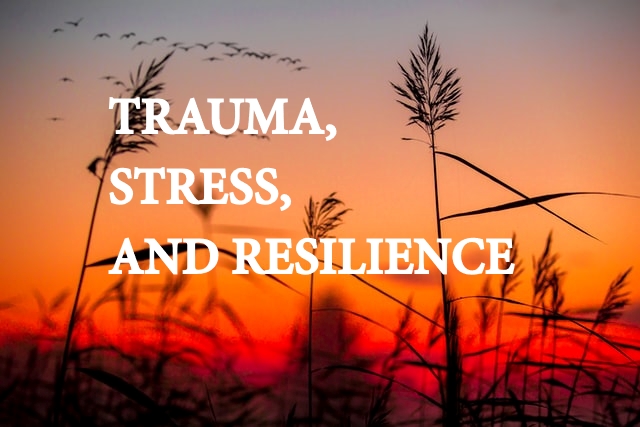Complex post-traumatic stress disorder (CPTSD) is a condition that causes life-altering problems for those who experience it. The symptoms of CPTSD occur due to complex trauma, and building resilience is vital.
In this article, we shall explore how to build resilience despite trauma and stress.
What is Resilience?
The American Psychological Association (APA) gives the following definition of resilience:
“Resilience is the process and outcome of successfully adapting to difficult or challenging life experiences, especially through mental, emotional, and behavioral flexibility and adjustment to external and internal demands.”
They explain that numerous factors which contribute to a person’s ability to adapt in the face of adversity. The APA lists three:
- The ways that a person views and engages with their world
- Forming specific coping strategies
- The quality and availability of social contacts
Resiliency means being capable of bouncing back when something challenging happens in life. Being resilient also means picking oneself up and continuing even after being struck down.
Resilience in the Face of Overwhelming Circumstances
Resilience is a trait most people have; however, this trait is glowing in most who have survived childhood trauma. Despite what was happening to these children, they can have a forward-looking attitude and keep going.
Research shows that people who have a higher level of resilience hold significantly more positive thought processes that allow them to move forward (Mak et al., 2011).
When faced with some of the worst adversity any child could experience, somehow, these children were able to bounce back enough to keep going. The resilience that abused children has shown in their ability to adapt following a traumatic event is astonishing. Some children use dissociation to adapt, and others use people-pleasing.
While these adaptations work to a point, they are not healthy and can become cumbersome later in life.
However, children aren’t the only people who need to be resilient, as all humans need to build their resistance when encountering traumatic events at any time in their lives.
Building Resiliency
It is hard to remain positive and find balance during a stressful event. However, resiliency can enable people to protect themselves from becoming overwhelmed by stress and protect them from the development of mental health challenges (Mak et al., 2011).
When one develops a mental health crisis or disorder, learning to build resilience can enormously enhance the healing process. There are many ways to build resilience after a stressful event that can change one’s life, including the following.
Recognize that you are affected by trauma. Don’t simply stuff the emotions and feelings that result from experiencing trauma; your body will rebel and let you know anyway. There are physical signals that you are stressed: cold hands, difficulty concentrating, tight muscles, headaches, upset or nervous stomach, feeling edgy, irritable, or withdrawn.
If you recognize yourself in the above paragraph, you can try things such as practicing deep breathing, going for walks, and writing down your thoughts.
Building resilience and defeating trauma, is to take time for yourself in your busy day. Keep in mind that taking time out for yourself is not selfish, and it may require you to say no to some activities and prioritize your responsibilities.
The best way to begin taking time for yourself is to start with small changes to your routine. Add to your schedule time to exercise, eat right, sleep, and participate in relaxing activities. Make sure to notice when you feel good and repeat whatever you are doing. This gives your mind and body a break and builds your ability to be resilient. Read, listen to music, or do other things that shift your attention away from harmful things in your life.
Look at problems through a different lens. Reframe how you see your problems to reduce anger and build resilience. View annoying inconveniences in your day, such as waiting in your car for someone, as opportunities to enjoy yourself.
Resiliency promotes physical health, better immunity, and quality sleep and facilitates healthy behavior. Becoming more resilient can support healthy practices such as quitting smoking and limiting alcohol consumption.
Ending Our Time Together
Resiliency, although inborn for some, can be built to help resist life’s stressors. There is hope if you have experienced childhood trauma and developed complex post-traumatic stress disorder.
By practicing the resiliency-building exercises mentioned in this article or finding other ways to redirect your mind to mitigate the effects trauma has on your life, you can find peace in your life.
No matter what, remember how brave you are to have gotten this far. Many people would fold up under the pressure you were under and the subsequent effects of CPTSD.
“Life doesn’t get easier or more forgiving; we get stronger and more resilient.”
― Steve Maraboli
“The oak fought the wind and was broken; the willow bent when it must and survived.”
― Robert Jordan
If your heart is broken, make art with the pieces.”
― Shane Koyczan
References
Mak, W. W. S., Ng, I. S. W., & Wong, C. C. Y. (2011). Resilience: Enhancing well-being through the positive cognitive triad. Journal of Counseling Psychology, 58(4), 610–617.
Are you a therapist who treats CPTSD? Please consider dropping us a line to add you to our growing list of providers. You would get aid in finding clients and help someone find the peace they deserve. Go to the contact us page and send us a note, and our staff will respond quickly. Shortly, CPTSD Foundation will have compiled a long list of providers who treat complex post-traumatic stress disorder. When it becomes available, we will put it on our website www.CPTSDFoundation.org. Visit us and sign up for our weekly newsletter to help keep you informed on treatment options and much more for complex post-traumatic stress disorder.

My name is Shirley Davis and I am a freelance writer with over 40-years- experience writing short stories and poetry. Living as I do among the corn and bean fields of Illinois (USA), working from home using the Internet has become the best way to communicate with the world. My interests are wide and varied. I love any kind of science and read several research papers per week to satisfy my curiosity. I have earned an Associate Degree in Psychology and enjoy writing books on the subjects that most interest me.





It’s remarkable to see how resilience plays a pivotal role in helping individuals navigate overwhelming circumstances, particularly those who’ve endured childhood trauma. During my student days, I often wrote essays on various health problems, this source https://writinguniverse.com/essay-types/argumentative-essays/ was a big help for my writings papers. so it was less stress and more free time for me. The strategies discussed in this article, such as recognizing the impact of trauma and reframing problems, are undeniably valuable for fostering mental and emotional flexibility. It’s a courageous journey, but building resilience can lead to a more peaceful and balanced life.
Thanks for your informative post, I was able to read it thanks to a writing service nurses essay writing, and in the meantime, I can read your wonderful post while they do my work for me!
Thanks for your informative post, I was able to read it thanks to a writing service nurses essay writing222, and in the meantime, I can read your wonderful post while they do my work for me!
Thank you for this insightful and thought-provoking blog post on trauma, stress, and resilience. The way you articulate the impact of trauma and the importance of fostering resilience truly resonated with me. It’s crucial to raise awareness about these issues and promote understanding.
While reading your post, I couldn’t help but reflect on the various coping mechanisms individuals adopt on their healing journey. Your emphasis on resilience reminded me of the value of seeking professional support. In fact, I recently came across a resource that aligns with your message about fostering resilience—Calmerry’s video chat therapy. The link to Calmerry’s video chat therapy: https://calmerry.com/video-chat-therapy/ caught my attention because it provides a convenient and accessible platform for individuals to connect with licensed therapists. In the context of building resilience, having a supportive professional to guide one through the healing process can be transformative. The ability to engage in therapy through video chat offers flexibility, making it easier for people to access the support they need, especially during challenging times.
I believe that incorporating such resources into the conversation around trauma and resilience is essential. It not only highlights practical solutions but also encourages a proactive approach to mental health care. Thank you for sparking this reflection, and I look forward to more insightful content from the CPTSD Foundation.